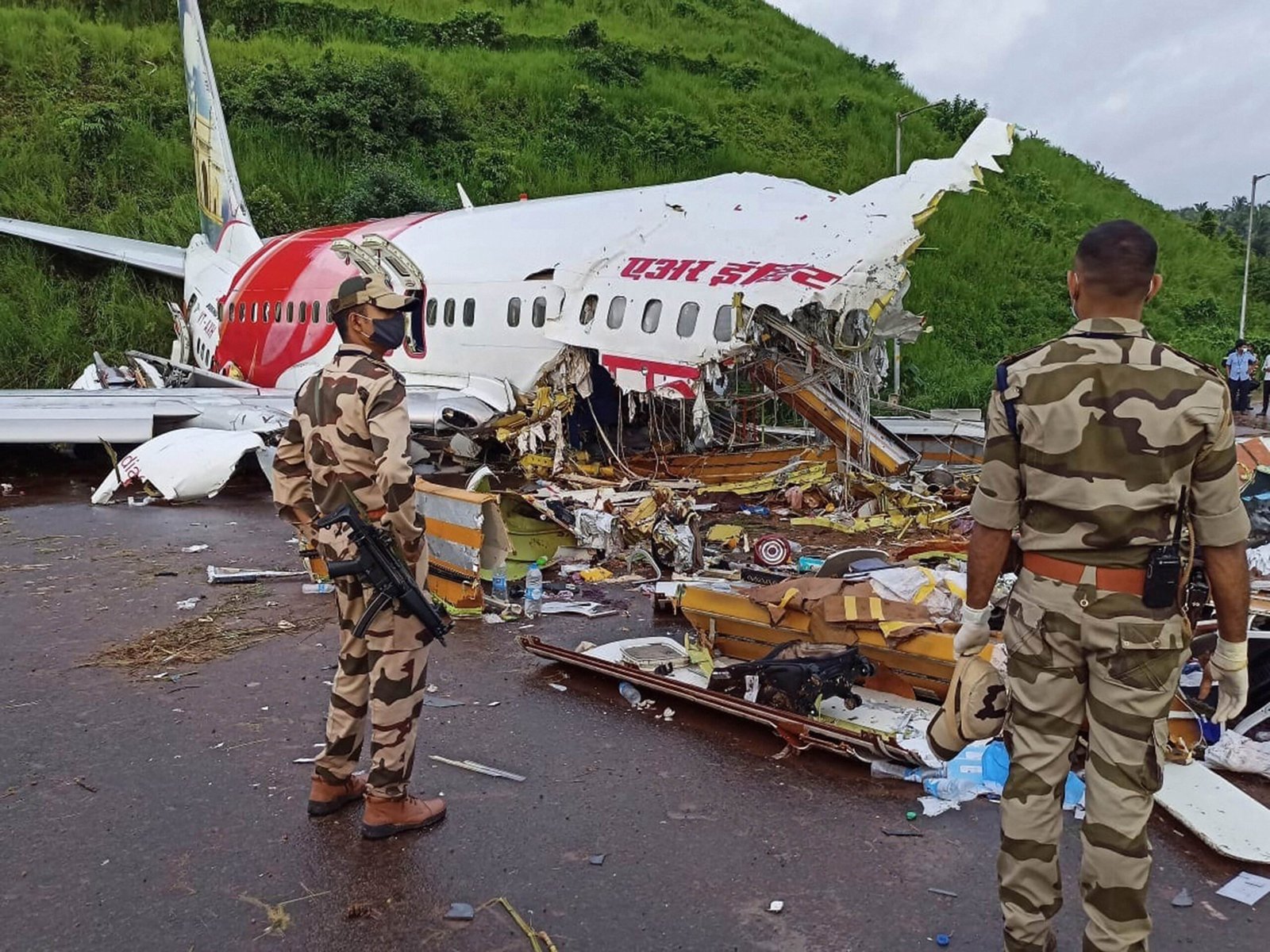Ahmedabad, India – June 12, 2025 – In a tragedy that has gripped the nation and drawn worldwide concern, Air India Flight AI171, en route from Ahmedabad to London Gatwick, crashed shortly after takeoff, sending shockwaves through both the aviation industry and the hearts of millions. The aircraft, a Boeing 787 Dreamliner, was carrying 230 passengers and 12 crew members when it went down near a residential area in the Meghani Nagar neighborhood, just minutes from Sardar Vallabhbhai Patel International Airport.
Initial reports indicate that the aircraft lost altitude rapidly after a distress call was issued, ultimately crashing into a densely populated locality. The impact caused a massive fire, damaging several homes and leading to fears of substantial casualties both in the air and on the ground.
Panic in the Skies, Fire on the Ground
Just five minutes after takeoff, residents near the airport reported hearing a loud explosion followed by the sound of metal tearing through buildings. Within moments, the skyline filled with black smoke, visible across the city. First responders rushed to the scene, navigating narrow lanes and panicked crowds to reach the burning wreckage.
Local hospitals activated emergency protocols, with ambulances ferrying the injured as firefighters struggled to contain the flames. Witnesses described scenes of chaos—people shouting, searching for loved ones, and trying to assist others trapped in debris.
The Lives Aboard
Flight AI171 included a diverse passenger list: tourists, families, students, and business travelers. Among the passengers were citizens from India, the United Kingdom, Portugal, and Canada. Many were reportedly headed to London to reunite with family, attend university, or explore new opportunities. The crew consisted of highly experienced pilots and cabin members, all trained for long-haul international operations.
While emergency personnel continue to identify bodies and locate survivors, families across multiple countries wait anxiously for confirmation, clinging to hope that their loved ones made it out alive.
Human Response in Real Time
As news of the crash broke, social media flooded with messages of support, prayers, and inquiries. Within an hour, government agencies, international embassies, and humanitarian organizations mobilized response teams.
In Ahmedabad, volunteers gathered near the crash site, offering water, food, and first aid to survivors and emergency workers. Makeshift shelters were quickly established for those displaced by the impact. The local community responded with unity, opening their homes to strangers and turning trauma into compassion.
Air India established emergency helplines and family support desks at airports across India and the UK, providing real-time updates, psychological support, and logistical help to distressed families.
Leadership and Official Reactions
India’s top officials immediately responded to the tragedy. Emergency meetings were held at the highest levels, with directions issued for coordinated relief and investigation efforts. Statements expressed sorrow, solidarity, and a promise to uncover the truth behind the crash.
Across the world, leaders conveyed their condolences. In London, government officials extended support for British nationals and their families. The international aviation community called for solidarity, urging swift investigation while saluting the courage of the rescue teams.
Boeing 787 Under Scrutiny
The Boeing 787 Dreamliner, considered one of the safest and most advanced aircraft models, now finds itself under intense scrutiny. This is the first major crash involving a Dreamliner resulting in total aircraft loss, sparking concern within aviation safety circles.
Though speculation about the cause of the crash abounds, no official statements have been made. Investigators are expected to examine every possibility—mechanical failure, human error, environmental factors, and even external interference. The Dreamliner’s reputation for reliability may face serious reevaluation as more technical details emerge.
The Investigation Begins

Authorities have sealed off the crash site and are working to retrieve the aircraft’s flight data recorder and cockpit voice recorder. These black boxes will be critical in reconstructing the aircraft’s final moments.
Specialist teams from India’s aviation regulatory body are leading the probe, supported by international experts. The wreckage is being carefully documented, with engineers analyzing engine remains, fuel traces, and communication logs. The investigation is expected to take several weeks, with preliminary findings likely in the coming days.
Echoes of Grief and Strength
Survivor stories are starting to emerge. Some passengers seated at the rear of the plane reportedly escaped with injuries before fire consumed the fuselage. Their accounts—marked by smoke-filled cabins, screams, and desperate efforts to unbuckle and flee—add a human face to the mechanical tragedy.
In one hospital ward, a child survivor whispered to her mother, “We flew through fire and landed in light.” Another man, cradling his injured father’s hand, said, “We have nothing left—but we’re still here.”
Even amidst unimaginable grief, these voices reflect a core truth: human resilience can shine even in disaster’s darkest hour.
Families, Support, and the Road to Healing
Air India has pledged full support to the affected families. This includes free air travel for relatives, hotel accommodation, trauma counseling, and immediate financial aid. International embassies are working in tandem to ensure that foreign nationals receive necessary assistance.
Airports in Delhi, Mumbai, London, and Lisbon have set up dedicated support zones where families can gather, speak to airline representatives, and receive updates. Local mental health professionals are offering free services to both victims’ families and rescue workers.
In the coming days, public mourning ceremonies are expected to be held in Ahmedabad and London, allowing communities to come together and grieve collectively.
Repercussions Across Aviation
This crash will have a lasting impact on the global aviation industry. Immediate responses will likely include increased safety inspections of Boeing 787s worldwide, review of airline training protocols, and renewed discussion around airport safety near densely populated areas.
Insurance claims, liability assessments, and aviation regulatory audits are also expected to unfold. While no industry can eliminate all risk, today’s tragedy serves as a stark reminder that vigilance must remain constant, and passenger lives must always be prioritized over efficiency.
Rising from the Ashes

In the heart of Ahmedabad, even as smoke still rises from the wreckage, people gather with candles, prayers, and tear-streaked faces. There is sorrow, yes—but also unity. There is loss, but also courage. Citizens who never knew each other stand hand in hand, honoring lives they never met.
This tragedy will not be remembered solely for its devastation. It will be remembered for the humanity it uncovered—for the strangers who became rescuers, the volunteers who became family, and the victims who reminded us all how precious and fragile life truly is.
Moving Forward with Purpose
In the days to come, as investigations progress and memorials are held, the hope remains that lessons will be learned. That safety will be tightened. That families will find closure. And that someday, stories of survival, bravery, and unity will serve as light in the long shadow of this day.
The skies may feel heavier now, but as the world gathers to support those affected, we are reminded that even amid immense loss, strength takes flight.
Read More: Top 10 COVID-19 Safety Icons Every Indian Should Know









Leave a comment